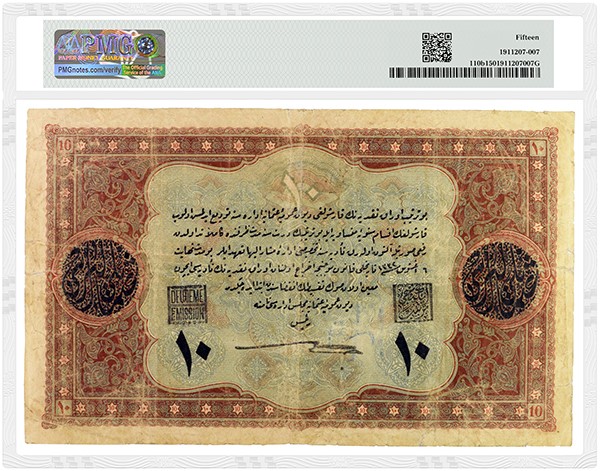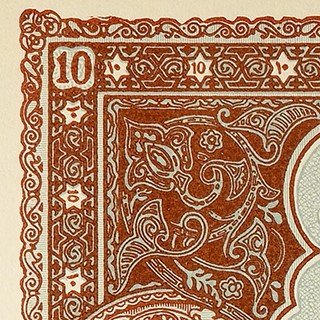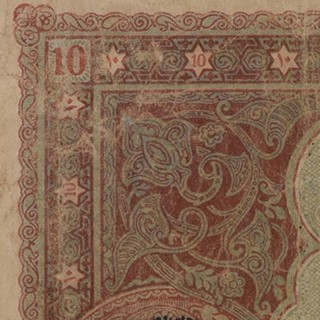Counterfeit Detection: Turkey 10 Livres
Posted on 10/21/2025
During the Revolutionary War, the British successfully undermined the economy of the nascent United States with counterfeit currency that was sophisticated enough to gain widespread acceptance. Fast-forward a century and a half, and a similar vulnerability in paper money was again on display at the twilight of the Ottoman Empire.
World War I put enormous strain on the Central Powers, which included Germany, Austria-Hungary, Bulgaria and the Ottoman Empire. The Ottoman economy was based on agriculture and faced massive price increases during the war. By 1918, the final year of the war, its army had dwindled due to attrition and desertions to a mere 100,000.
The partition of the Ottoman Empire’s territory in the Middle East was planned by the Allies during World War I, with Great Britain ultimately gaining control of much of Israel, Jordan, Iraq and other areas. A great deal of this region was already under British military administration well before the end of the war, and the British worked to uproot centuries of Ottoman influence there. With all of this as a backdrop, the British military introduced counterfeits of the 10 Livres note, which had previously served as the currency in the region.
 |
|
 |
|
| British Military Counterfeit of a Turkey, Ministry of Finance 1918 / AH 1334 10 Livres Click images to enlarge. |
|
Genuine examples of the 1918 10 Livres are relatively scarce today, with the PMG Population Report recording a mere 34 examples of the issued varieties, which are distinguished by their emission stamp (or lack thereof). Meanwhile, the PMG Population Report lists 191 examples of the British military counterfeits, about 10 percent of which are found in About Circulated grades or lower, attesting that many did indeed were used in commerce. (The one pictured in this article is being offered in a Heritage Auctions sale in November 2025.)
The British counterfeits are easily identifiable by the repeating English and Turkish number 10 that lines the left side of the back of the note. On genuine notes, the 10’s point outward, while on the British counterfeits they point toward the center of the note. Such a glaring error was likely done intentionally to give British authorities an easy way to identify them.
Knowing whether you have a genuine or counterfeit note helps in determining its value. These military counterfeits sell for about $100 to $200, while the genuine examples sell for roughly twice that amount. If you are ever unsure of the authenticity or grade of a banknote, remember that PMG backs its determinations with the PMG Guarantee.
You can read more PMG Counterfeit Detection columns here.
Stay Informed
Want news like this delivered to your inbox once a month? Subscribe to the free PMG eNewsletter today!



